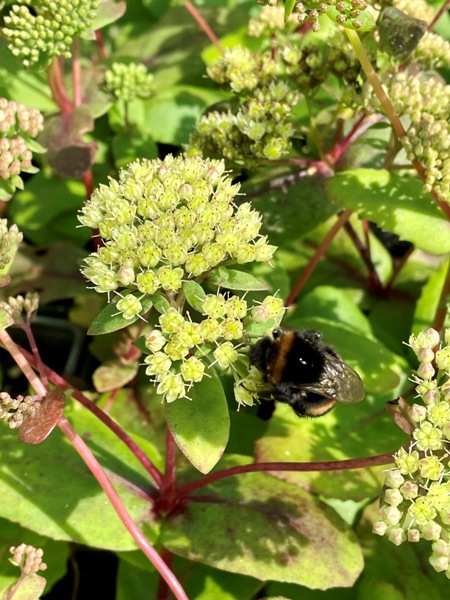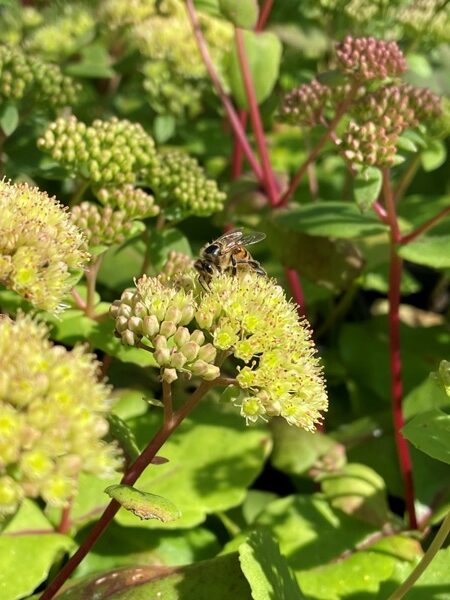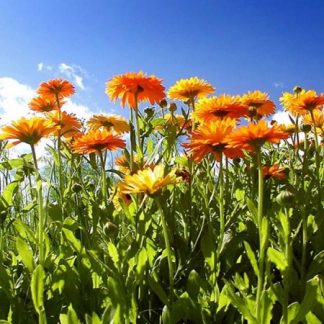Description
Crassulaceae (family name)
Forage for Pollinators: Produces Nectar for all bees, Honeybees, Short and Long-tongued bees and Solitary bees and hoverflies and likely some butterflies and moths (it is the larval food plant of the endangered Apollo butterfly in Finland)
Flowering time: July, August, September
Growing information: HERBACEOUS PERENNIAL WILDFLOWER native across Europe as far north as Southern Finland. This is the large wild Stonecrop which has creamy-white flowers and is a parent of some of the many garden forms. Grows to 0.15 – 0.5m (6 – 20”) with succulent stems and leaves which will be shed overwinter to leave behind a dry stem and seed heads. Grow in full sun in well-drained, moderately fertile soil which is neutral to slightly alkaline. Sits well with wild grasses in a wild garden setting, mid-border or in the gravel garden or containers as it is extremely tough and drought-tolerant. If the plants become tall and lanky (as will happen in too much shade) the main flowering stem can be ‘Chelsea chopped’ in June and the plant will bush out and produce more flower heads albeit a little later to flower. This is closely related to the purple-flowered species Sedum/ Hylotelephium spectabile (known as Butterfly Stonecrop) which is more of a butterfly plant. A well-known hyrid between these two species (H. Spectabile x H. Telephium) produces Sedum/ Hylotelephium (‘Autumn Joy’) ‘Herbstfreude’ an excellent bee and butterfly cultivar, though sterile. Another species of Stonecrop which we also grow is Sedum reflexum (syn. rupestre) a native perennial with evergreen blue/green small leaves and yellow flowers in June-August which makes excellent ground cover and companion to H. Telephium. Another member of this family which can normally only go outside in the Summer in the British Isles is Echeveria with its stunning orange-pink with yellow tipped bells is another popular with bees.







